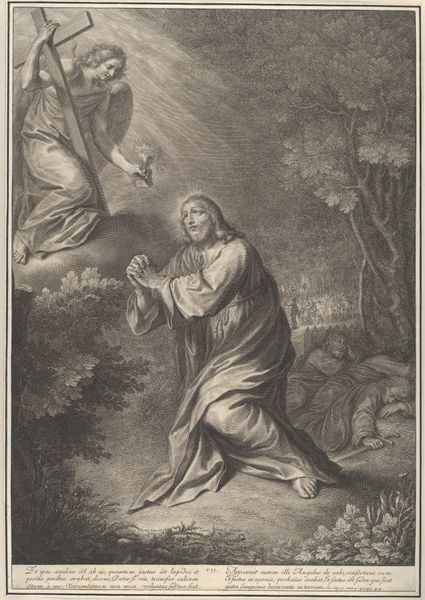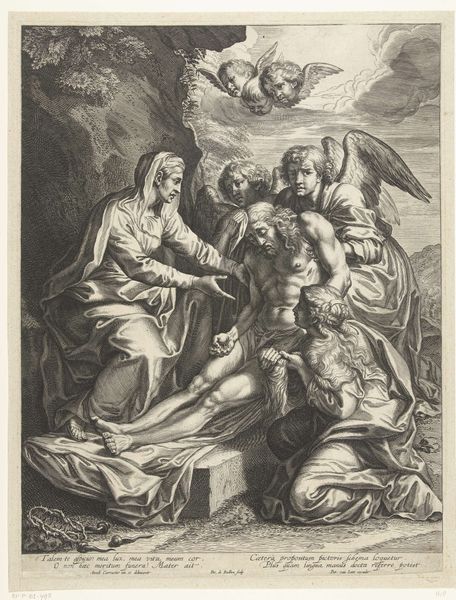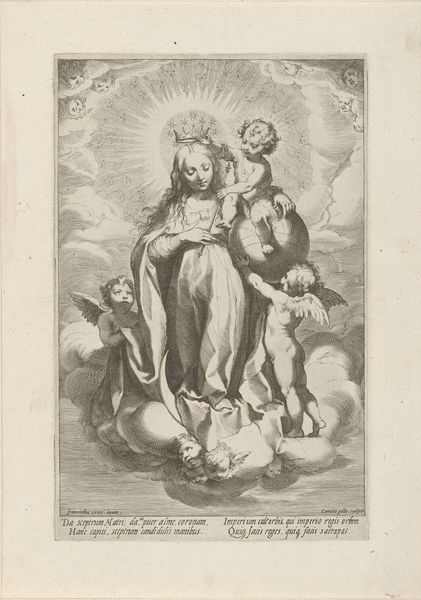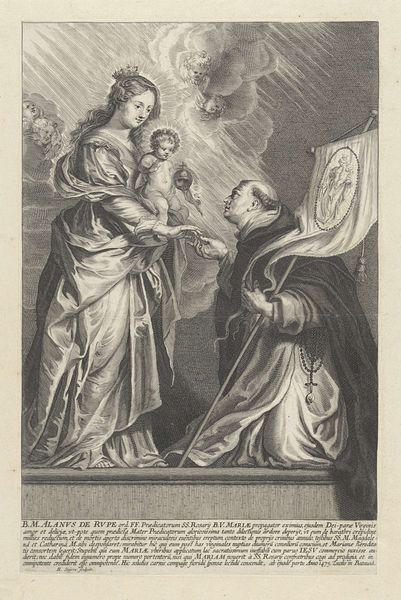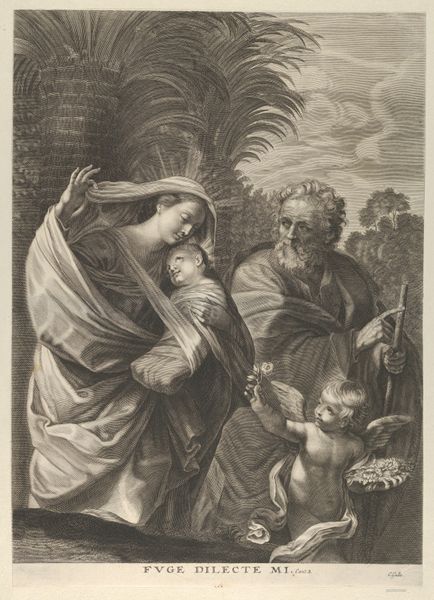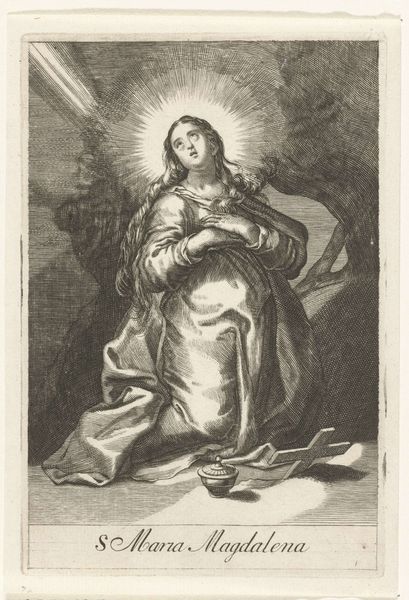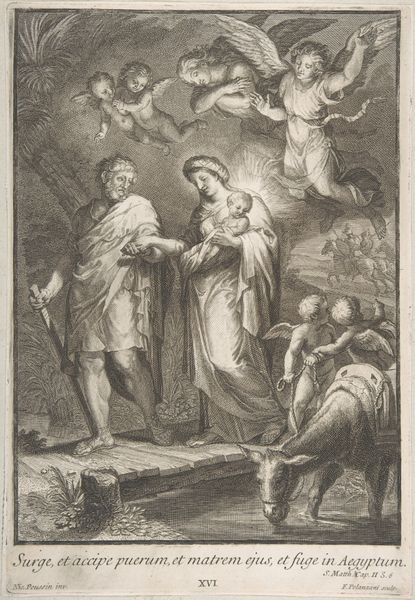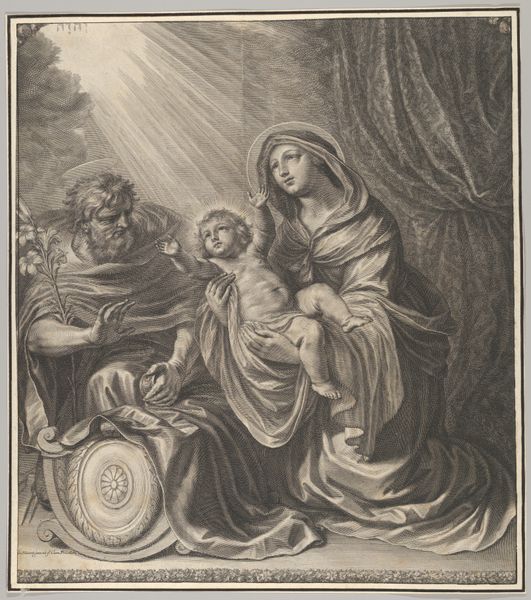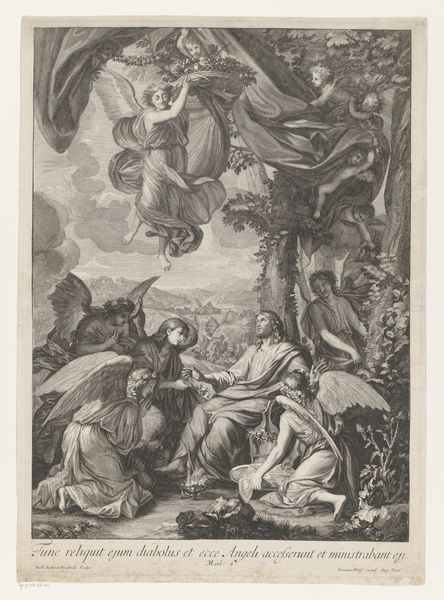
print, engraving
# print
#
figuration
#
romanticism
#
history-painting
#
engraving
Dimensions: height 595 mm, width 450 mm
Copyright: Rijks Museum: Open Domain
Charles Howard Hodges made this mezzotint, Christus in de hof van Getsemane, sometime before his death in 1837. Mezzotint is an intaglio printmaking process that relies on a copper or steel plate worked over with a tool called a rocker, creating a finely textured surface that holds ink. Hodges would have used a scraper to selectively burnish areas of the plate, creating lighter tones. This painstaking work yields rich tonal gradations, evident in the angel’s luminous wings and Christ’s sorrowful expression. Consider the labor involved in producing such a print. Each impression requires inking the plate, wiping the surface, and running it through a press – a physically demanding task. Prints like this were commercial products, circulated widely and consumed by a broad audience. The mezzotint technique itself, with its reliance on skilled handwork, exists in an interesting tension with the reproductive nature of printmaking. Understanding the labor and skill embedded in this image allows us to appreciate the complex relationship between art, craft, and industry in the 19th century.
Comments
No comments
Be the first to comment and join the conversation on the ultimate creative platform.



